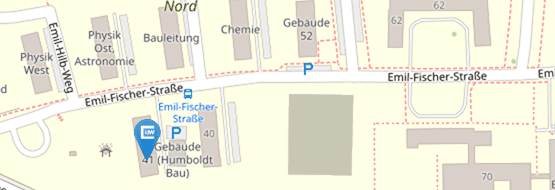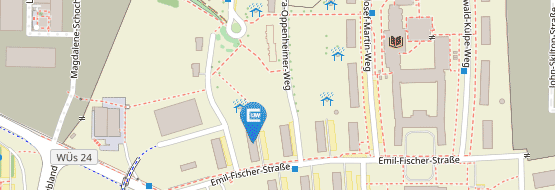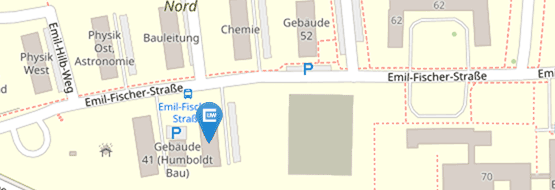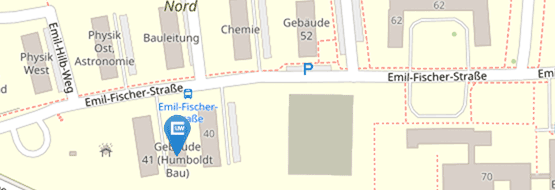On a collision course with game theory (source: einBlick 22.09.2017)
09/22/2017How do pedestrians behave in a large crowd? How do they avoid collisions? How can their paths be modelled? A new approach developed by mathematicians from Würzburg and Nice provides answers to these questions.
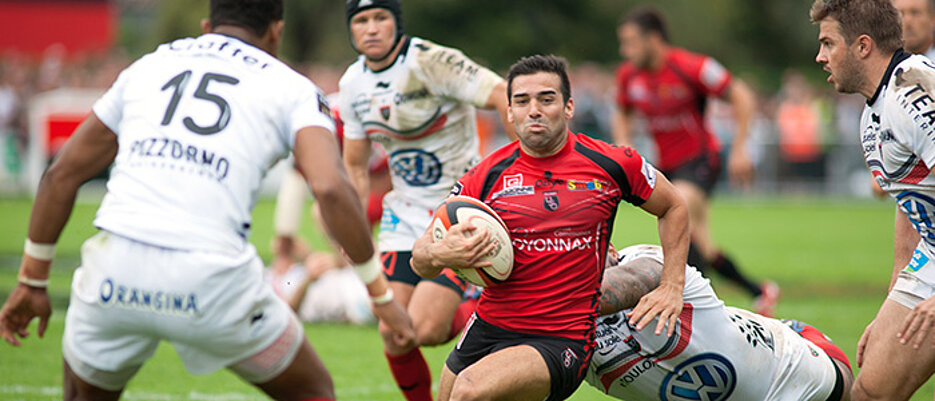
We all know the situation: You walk across a square and another pedestrian is walking towards you. Now if neither of you changes course, a collision is inevitable. For a long time, researchers have been grappling with the question of how people behave in such situations. Knowing this is important when it comes to optimising the design of public squares with regard to traffic or creating escape routes that fulfil their purpose even in the event of a mass panic. Mathematicians from the universities in Würzburg and Nice have now presented a new solution approach to this problem. They believe: "It's all just a game!"
Avoidance is the decisive factor
Avoidance: According to Alfio Borzi, this is the most important factor when modelling pedestrian motion patterns mathematically. After all, nobody wants to clash with an oncoming pedestrian on their way from A to B. Borzi holds the Chair of Mathematics IX (Computational Science) at the University of Würzburg. Together with postdoc Souvik Roy and French mathematician Abderrahmane Habbal, he tried to cast human paths into an equation. The scientists have now published their findings in the journal Royal Society Open Science.
"When the paths of two pedestrians cross, it basically comes down to the following question: What is the optimal solution of this conflict that is satisfactory for both parties," Alfio Borzi explains. Just walking straight on would obviously not be helpful for either side. And if only one of them alters course, that person might feel treated unfairly.
Finding the balance
In fact, there are numerous possibilities how people could behave in such a situation. So a purely mechanical description of the situation is not beneficial. "This would take us to the image of the donkey between two identical haystacks that cannot decide which one to eat and so starves to death," Borzi says. Therefore, the mathematicians used the game theory by John F. Nash as the basis for their models.
The Nash equilibrium is a central concept of this theory. The equilibrium has been reached when each player in a game chooses exactly the one strategy that offers the best solution possible for him and all co-players. Therefore, each player is still pleased with his choice of strategy in hindsight; they would make the same choice again. Or, as Alfio Borzi puts it: "Each player gets the best possible solution, so they are all happy."
Combined with the Brownian motion
In a next step, Borzi and his colleagues combined the game theory approach with another important mathematical equation: the Fokker-Planck equation which goes back to Albert Einstein. Among others, it describes over which distances comparably large particles are "pushed around" by tiny molecules. A discovery made by Scottish botanist Robert Brown led to this equation. In 1827 while examining pollen suspended in water under the microscope, he had observed that the pollen grains' movement is completely erratic and random.
"The Fokker-Planck equation describes the probability of all movement processes, i.e. of all possible motions of a body from A to B," the mathematician explains. Combined with the game theory, it is also suitable to model the movement of larger crowds of people.
Experiments confirm calculations
The new equation works reliably, at least for two persons crossing a room and whose paths meet in the process. Borzi and his colleagues were able to verify this during practical experiments. In fact, the actual paths taken are surprisingly similar to the calculated curves. In further studies the mathematician wants to find out whether this agreement still exists under modified specifications. For this purpose, he is currently looking for cooperation partners, e.g. from the field of psychology. After all, he believes that this is also an issue for behavioural research.
According to Borzi, it is obvious to transfer the concept of game theory to human motion patterns: "There are signs in current research that more and more fields of biology can be described with this theory," the mathematician says. For example, when two animal populations compete for one habitat. In this case, too, looking for the best possible solution for both sides could lead to the optimal outcome.
It is no wonder then that the mathematician gets philosophical: "Maybe our whole life is just a game after all!"
Pedestrian motion modelled by Fokker–Planck Nash games. S. Roy, A. Borzì and A. Habbal. R. Soc. open sci. 4: 170648. http://dx.doi.org/10.1098/rsos.170648
Contact
Prof. Dr. Alfio Borzi, Chair of Computational Science
T. +49 931 31-84132, e-mail: alfio.borzi@uni-wuerzburg.de


